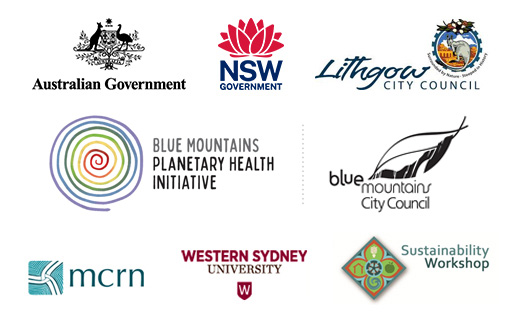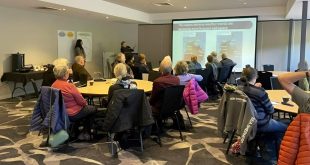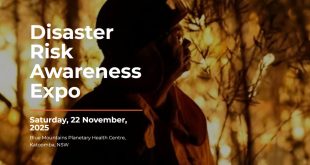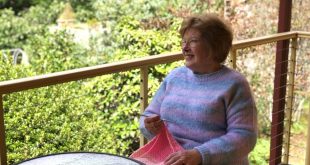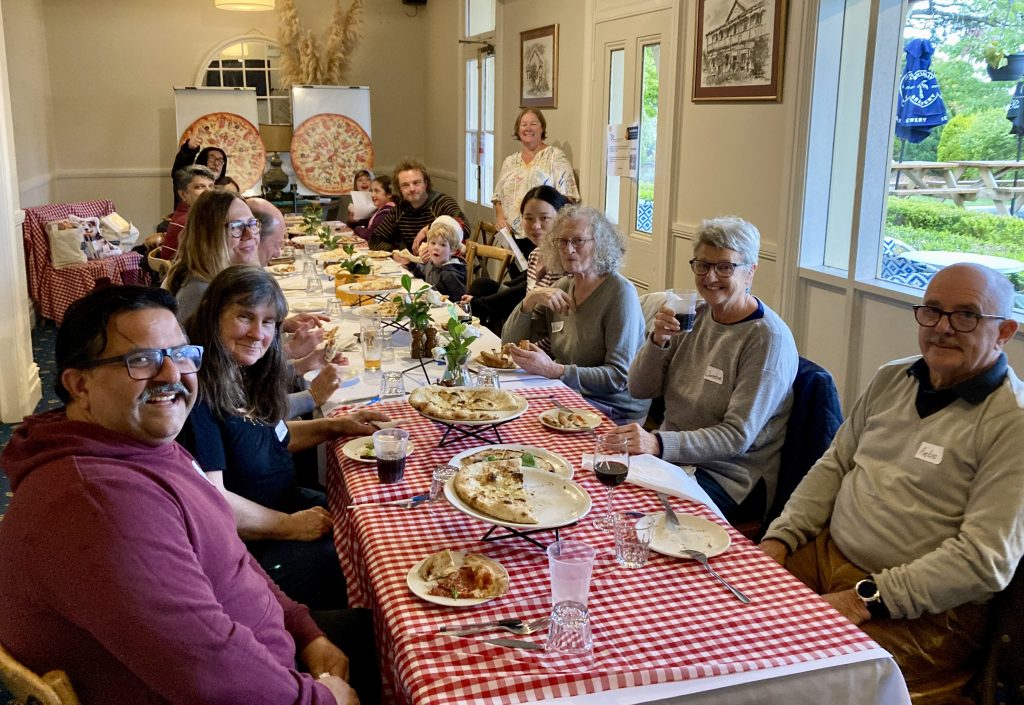
Participants at the Leura Pizza Preparedness workshop (Springwood Neighbourhood Community Co-operative)
By Hamish Dunlop
Hamish Dunlop talks to the Bush Fire Resilience Team at Springwood Neighbourhood Centre Co-operative Ltd. to find out how they have been assisting people to overcome ‘preparedness fatigue’. High Teas, Pizza Preparedness workshops, Meet Your Street events and a Bushfire Resilience website have all helped to start conversations about what each of us need to consider when planning for disaster.
Bush fire preparedness workshops: catering included!
Preparing for bushfire can be daunting. It takes time and energy to find the right information. Then there are steps to follow and things we need to do. Some of us suffer from ‘preparedness fatigue’. We’re barely out the other side of one disaster and we’re expected to be ready for the next. We’re back-pedalling to build psychological resilience, let alone get our planning underway. Finding time is one of the biggest challenges.
Jo Fielding from the Bush Fire Resilience Team says: “We’ve been able to create a warm, safe space for individuals and families to come to, and think and learn about bushfire preparedness. We did learn that people wanted to get assistance from the RFS, but for one reason or another, people are not walking into RFS sheds. What we’re doing is giving people morning or afternoon tea, or pizza, and having a light-hearted look at a serious subject. We’re playing games and providing activities that are taking some of the anxiety out of thinking about bushfire preparedness.”
Now, they are partnering with the Rural Fire Service to deliver 90-minute, hands-on workshops to assist participants develop a household bush fire survival plan. RFS volunteers can answer questions and provide advice specific to individual and household circumstances. The outcome is that everyone will come away from the workshops with a draft bush fire plan. The workshops are catered, and specific dietary requirements can be indicated when you register. To register, call (02) 4751 3033 or click here. Sessions are running in different Mountains locations from 8th May to 1st June.
The Project and the Blue Mountains Bushfire Resilience Website
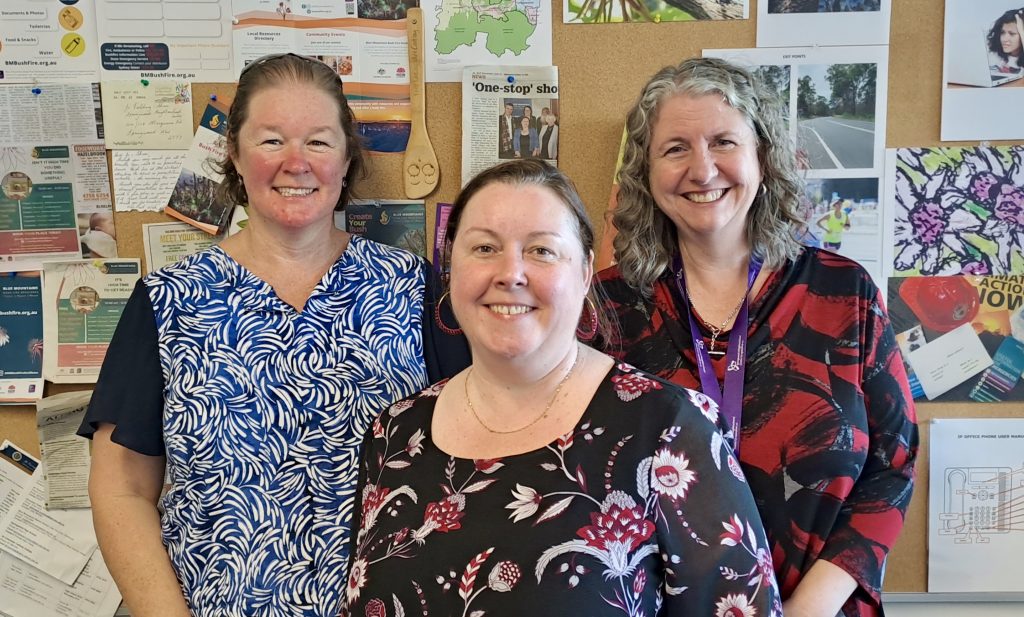
Project Leader, Katherine Starr (centre) and Community Development Worker’s Jo Fielding (left) & Shari Driver (right) (Hamish Dunlop)
The Bush Fire Resilience project is led by Katherine Starr, with Shari Driver and Jo Fielding in Community Development Worker roles and Amie Andrews as the Administration Officer. The project isn’t only about preparedness workshops. The other components are the Blue Mountains Bush Fire Resilience website and property services, which assist vulnerable people to manage their properties in preparation for bushfire, similar to services provided by the RFS’s AIDER program.
Another theme is connecting people with locally relevant information and services. Katherine says that simplifying the message has been key, as has the idea of empowering people.
“It’s very difficult to navigate all that information that’s out there. You can be taken off onto a tangent very easily when you go from website link to website link. The whole purpose of the Blue Mountains Bush Fire Resilience website is to create a directory of curated resources. Rather than providing thousands of links, we have selected a smaller set of resources that we think suit our Blue Mountains region best.”
There is a link to the website in the menu bar of Springwood Area Local News.
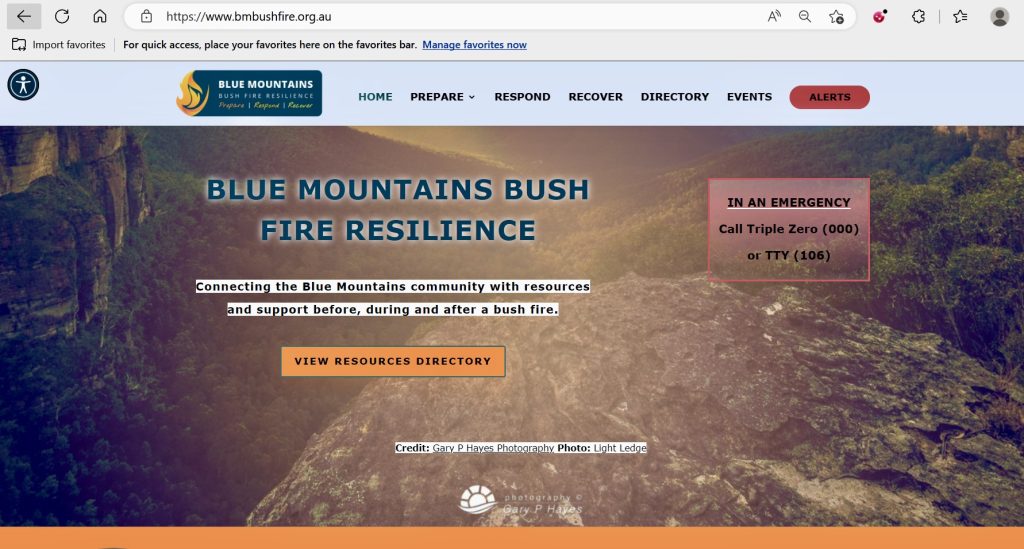
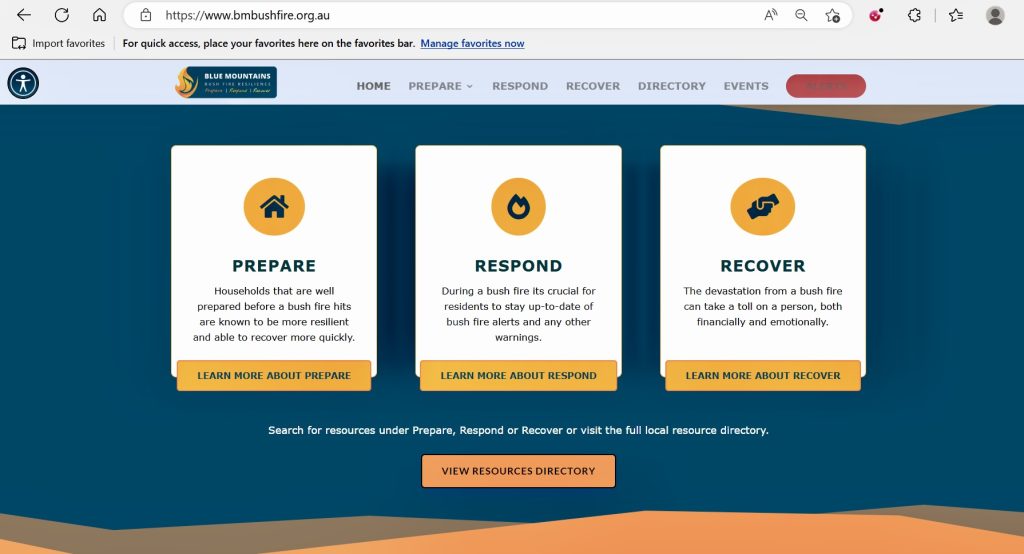
Bushfire plans and preparedness packs
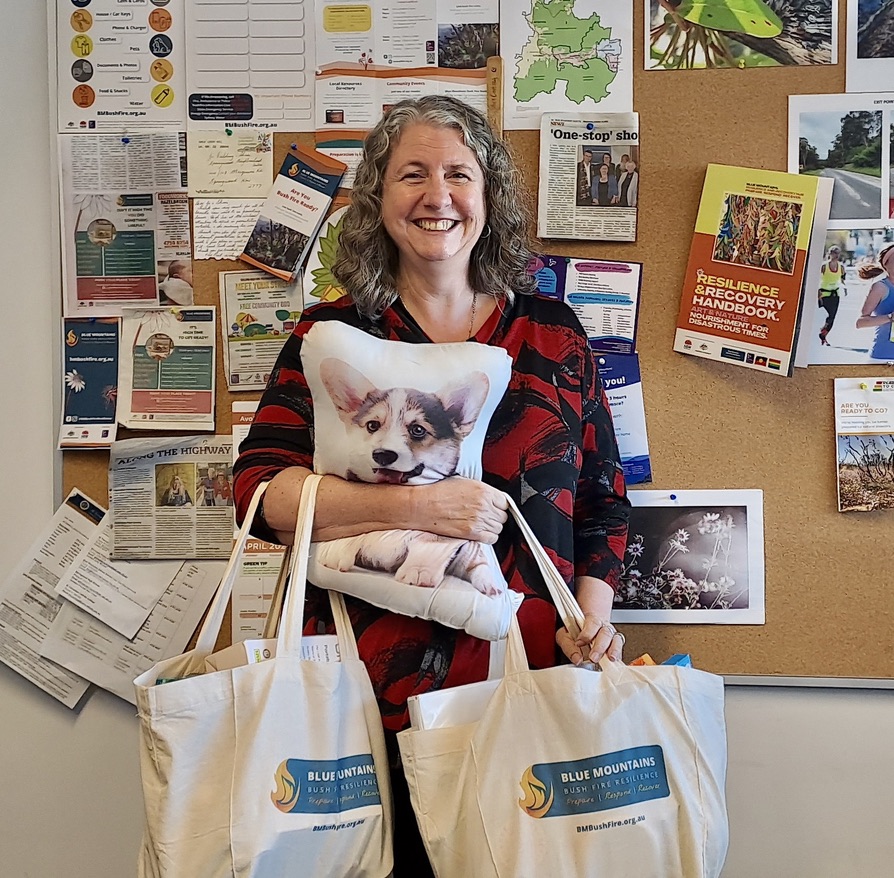
Shari Driver with cushion prop and preparedness packs (Hamish Dunlop)
In 2015, Springwood Neighbourhood Community Co-operative partnered with Charles Sturt University, Blue Mountains City Council and Katoomba Neighbourhood Centre to undertake research about vulnerability and resilience in the Blue Mountains. The survey revealed that less than 50% of responders had a bushfire plan.
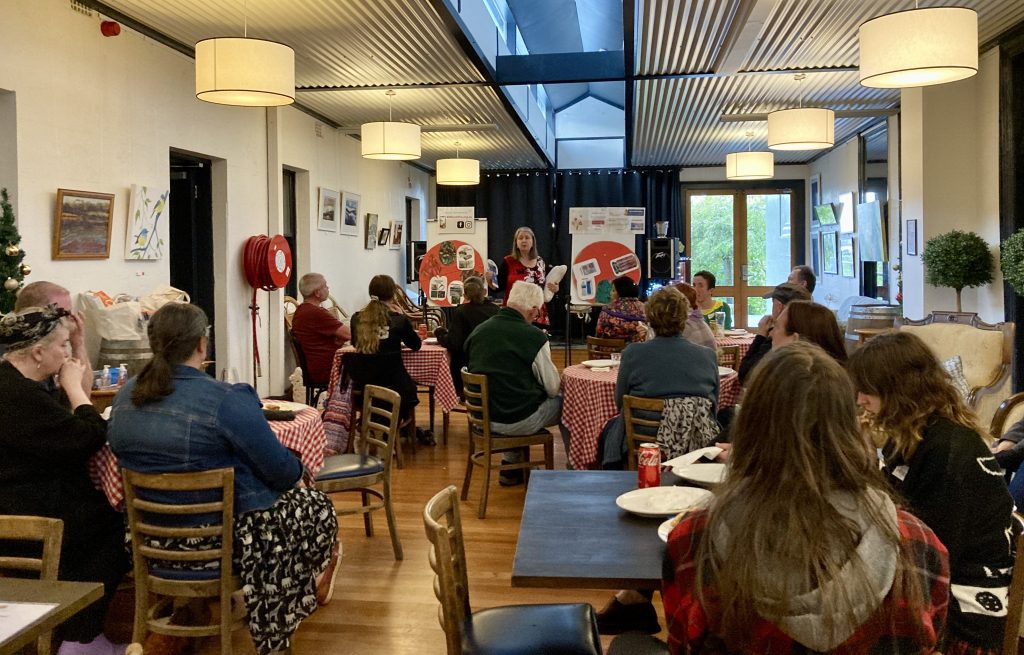
Shari facilitating at the Mt Victoria Pizza Preparedness workshop (Springwood Neighbourhood Community Co-operative)
Katherine tells me that earlier events were designed as conversation starters. “The aim was to explore what people need to take with them if they have to evacuate their home. This is an accessible entry point for people to start thinking about the elements of being prepared for bushfire.”
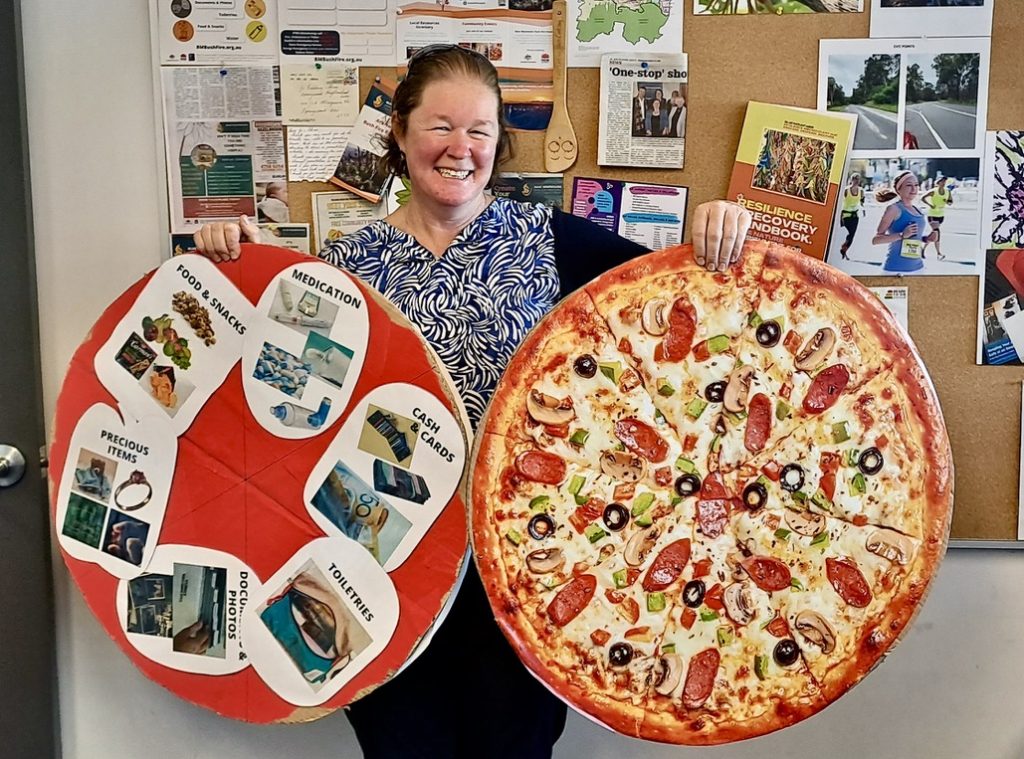
Jo demonstrating the Memory game they played during the Pizza Preparedness workshops
She shows me the Emergency Kit Checklist card from the preparedness pack. On one side of the card are categories such as medication, pets and clothing. These are written, but include infographics showing each category. On the other side of the card is a set of boxes. These enable people to write down specific items they need in their evacuation bag.


Blue Mountains Bush Fire Resilience Emergency Kit Checklist (front and back)
Prepare by getting to know your neighbours and talking about your concerns
The three Meet Your Street events took place at parks and halls. Partnering with the Rural Fire Service and State Emergency Service, they created a festival atmosphere with the Salvation Army providing a BBQ and entertainment from Shelly’s Facepainting and Zany Yare circus troop.

Shelly’s Facepainting at the Faulconbridge Meet Your Street event (Springwood Neighbourhood Community Co-operative)
Joanne says there’s a lot of activity during the events and workshops. “There’s talking going on because of the games. With the group dynamic, people can be quite extroverted. They’ll say, ‘This is what I’d take.’ They’d contribute openly. But you also get quieter people that don’t necessarily want to fight for that airspace. They just want to have a quiet discussion afterwards. We always leave time at the end of the workshops where we sit down with a cup of tea and a cake, or a piece of pizza and a soft drink. This gives people the opportunity to come and have a chat and talk about their concerns. They often say they’ve learnt a lot.”
Accessibility and inclusiveness
Accessibility and inclusiveness are key principles in the design of the workshops and the website. The workshops were developed to benefit a broad audience, including people with disabilities and English as a second language. The team knew that particular events would appeal more to certain demographics. The High Teas attracted mostly older participants, while the Pizza Preparedness workshops attracted more families. The website has accessibility features. Visitors can modify audio and visual elements through a UserWay menu. These include contrast, links, animations and dyslexia-friendly features. Consultation with local disability providers has resulted in four online sessions as part of this workshop series. This is as much for carers, as some have mobility issues.
The team has used surveys and informal feedback throughout the project. Katherine says that feedback has informed the design of the current series of workshops. “The initial workshops functioned as conversation starters. Now we want to see stronger results. We thought we might know how to facilitate this, but the evaluation forms made it clear. People would like RFS to assist them, but they’re not sure how to access the information and support. The outcome is that everyone will come away from the workshops with a draft bush fire plan. They can then take that home and talk about it with the whole household and finalise what their plan of action is in the event of bush fire.”
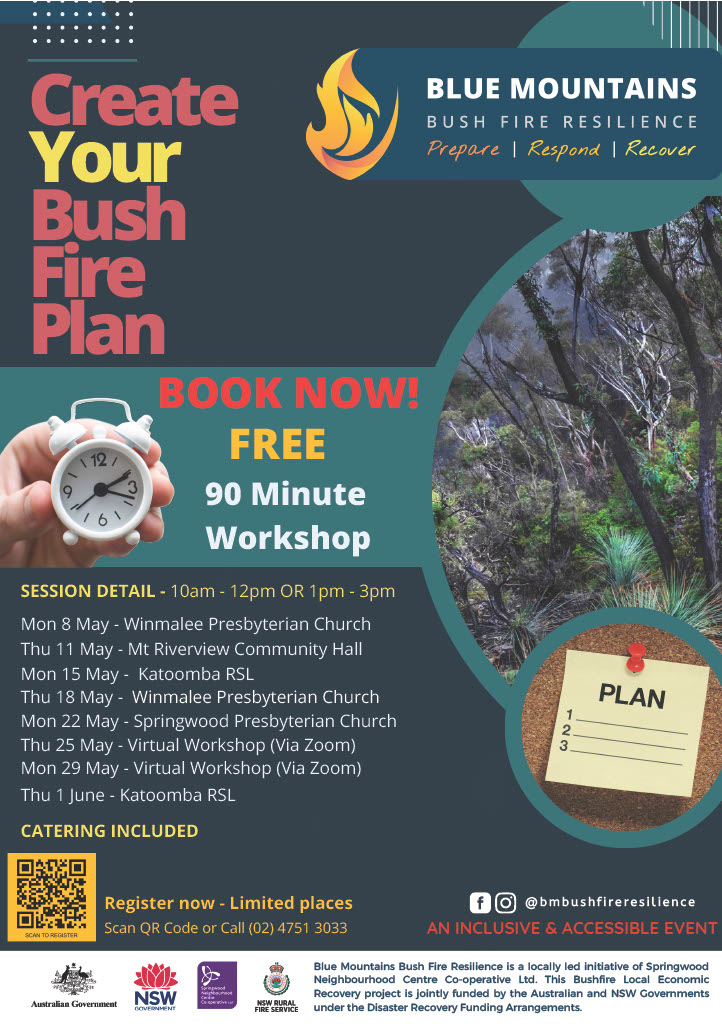
Project legacy
In a 12-month period, the team has got in front of around 2000 people, facilitated individual property preparedness and built the Blue Mountains Bush Fire Resilience website, which remains as a lasting resource. As the project wraps up, magnetic cards are being mailed out to 24,000 households. People can stick these on their fridges to remind them of the curated resources on the website. The team hopes it will act as a prompt for people to consider what they need to do in preparing for a bushfire, including developing a bush fire plan.
This story has been produced as part of a Bioregional Collaboration for Planetary Health and is supported by the Disaster Risk Reduction Fund (DRRF). The DRRF is jointly funded by the Australian and New South Wales governments.
